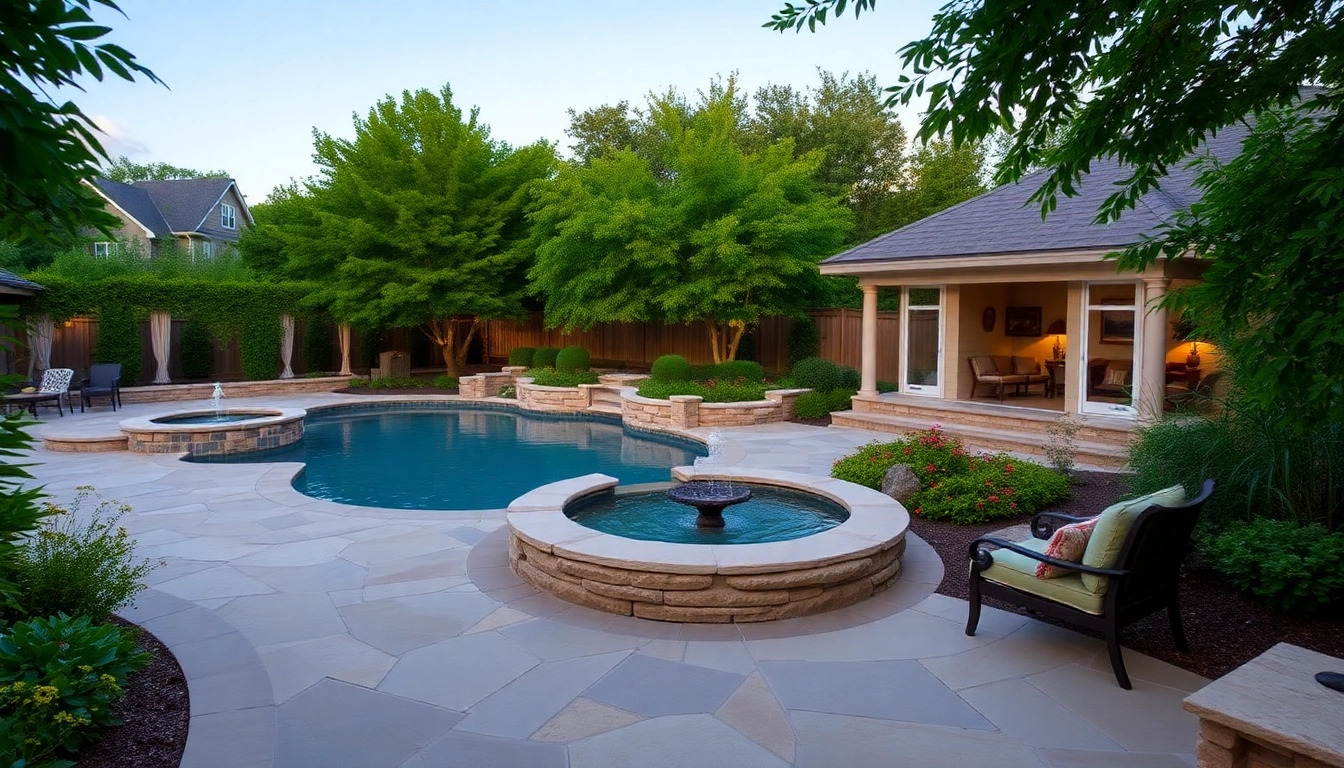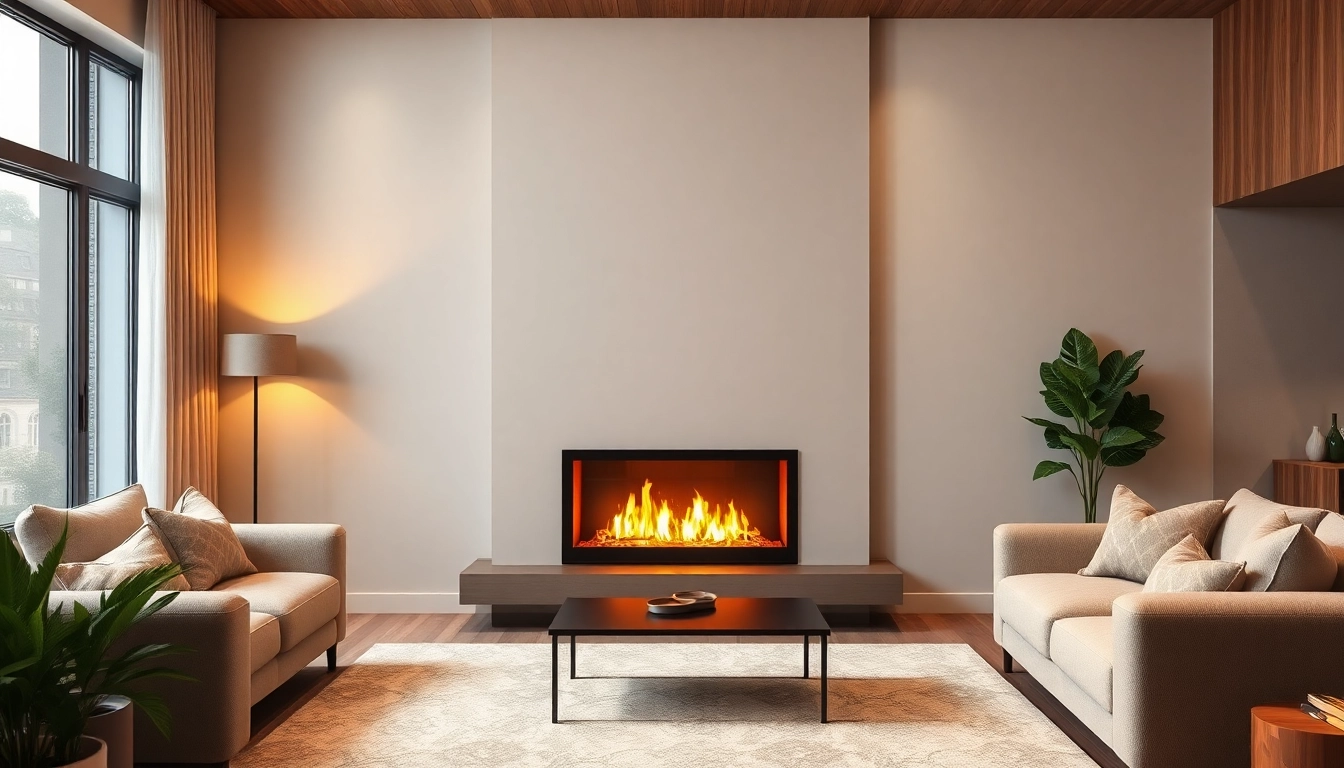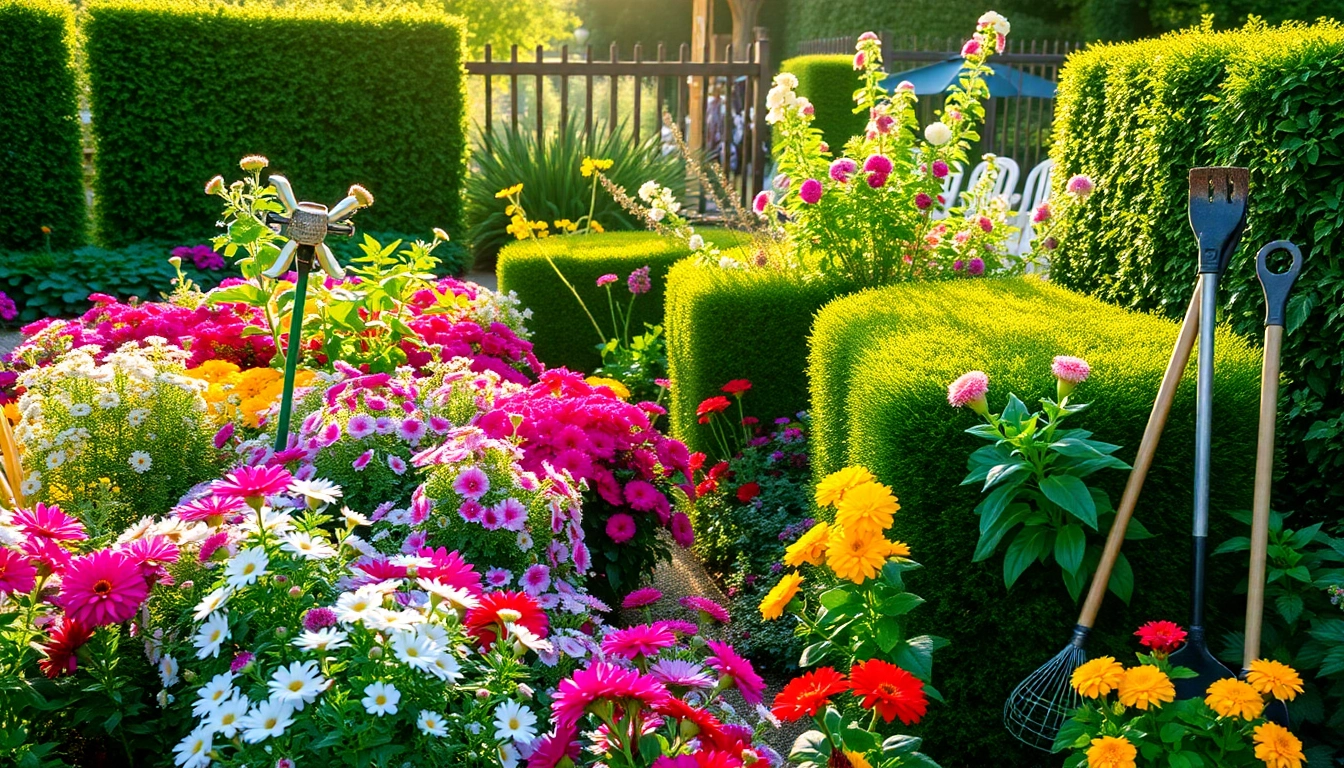Understanding Hardscapes & Pools
Creating an outdoor oasis that complements your home involves thoughtful planning, design, and integration of both hardscapes and pools. Hardscaping encompasses the non-living elements of your outdoor space, providing structure, functionality, and aesthetic appeal. When paired with a pool, these elements can transform your backyard into a stunning retreat that invites relaxation and enjoyment. Explore how hardscapes & pools can elevate your outdoor living experience.
What Are Hardscapes?
Hardscapes refer to the hard, non-plant materials used in landscape design. They include a variety of components such as:
- Patios
- Walkways
- Retaining walls
- Driveways
- Decks
- Fire pits
- Water features
These elements are important for establishing a foundation and layout for your outdoor space. Hardscapes are typically made from durable materials like concrete, stone, brick, or pavers. Their primary purpose is to provide structure, enhance functional use, and enhance the aesthetic value of the garden or yard.
The Benefits of Integrating Pools
Pools serve as a centerpiece for outdoor recreation and relaxation. The integration of a pool into your hardscaping design offers several benefits:
- Increased Value: A well-designed pool can add significant value to your property.
- Enhanced Aesthetics: With various designs and installations, pools can complement the architectural style of your home and landscape.
- Outdoor Recreation: Pools provide a gathering space for family and friends, promoting an active and social lifestyle.
- Relaxation Space: A pool can enhance your outdoor living area, creating a beautiful retreat to escape from daily stressors.
Key Differences Between Hardscapes and Softscapes
Understanding the distinction between hardscapes and softscapes is crucial for effective landscape design. While hardscapes provide structural components, softscapes involve living elements such as plants, trees, and flowers. Key differences include:
- Materials: Hardscapes use materials like stone, concrete, and brick, while softscapes focus on organic materials.
- Maintenance: Hardscapes generally require less ongoing maintenance than softscapes, which need regular care and attention.
- Function: Hardscapes serve practical purposes (paths, patios) while softscapes contribute to aesthetics, air quality, and wildlife habitats.
Choosing the Right Materials for Hardscapes & Pools
Popular Materials for Hardscaping
When selecting materials for hardscapes, consider durability, aesthetics, and the overall environment of your home. Common materials include:
- Concrete: Versatile and durable, often used for patios and pool decks.
- Natural Stone: Provides a rustic look; each stone is unique, enhancing visual appeal.
- Brick: Offers a classic appearance, ideal for walkways and patios.
- Pavers: Available in various shapes, colors, and textures, paving stones are flexible for design.
- Wood: Used in decks and pergolas; it creates a warm and inviting atmosphere but requires more maintenance.
Durability and Maintenance Considerations
Durability and maintenance must be key factors in material selection for hardscapes and pools:
- Weather Resistance: Materials should withstand local climate conditions, including extreme temperatures, rain, and snow.
- Wear and Tear: Choose materials that can handle foot traffic, especially in high-use areas like patios and pool decks.
- Maintenance Needs: With some materials, such as wood, regular sealing and stain are necessary. Others, like stone, may only require occasional cleaning.
Combining Aesthetics and Functionality
Achieving a balance between aesthetics and functionality is crucial in hardscape design. To create a visually pleasing and practical outdoor space, consider the following:
- Color Schemes: Select materials that harmonize with your home’s facade and the natural landscape.
- Textural Contrast: Combine different textures (smooth tiles with rough stones) to add depth and interest.
- Functional Layout: Design pathways, seating areas, and pool access to optimize usability while enhancing visual appeal.
Design Ideas for Your Hardscapes & Pools
Innovative Pool Shapes and Styles
Explore creative pool designs that stand out aesthetically while meeting your functional needs:
- Freeform Pools: Ideal for naturalistic designs that enhance landscaping; these pools can curve around rock formations or flower beds.
- Infinity Pools: Provide an unobstructed view, creating a seamless transition into outdoor surroundings.
- Lap Pools: Great for fitness; these narrow, long pools are perfect when space is limited.
- Plunge Pools: Compact and perfect for small yards or terraces, offering a refreshing dip without taking up significant space.
Creative Hardscape Features to Consider
Integrating unique hardscape features can enhance the overall design of your outdoor space:
- Fire Pits: Create a cozy gathering spot and extend the usability of your outdoor area into the cooler months.
- Waterfalls and Fountains: These features add a tranquil ambiance, improving the aesthetic around pools and patios.
- Retaining Walls: Useful for hills and slopes, they can also serve as seating areas, blending function with beauty.
- Outdoor Kitchens: Elevates your outdoor living experience, making entertaining convenient and enjoyable.
Maximizing Space in Smaller Yards
Small backyards can still be transformed into beautiful outdoor spaces. Here are some strategies to maximize functionality and aesthetics:
- Vertical Gardening: Use walls and fences to hang planters or trellises, freeing up ground space.
- Multi-functional Furniture: Incorporate furniture that can serve multiple purposes, such as storage benches or collapsible tables.
- Compact Pools: Opt for smaller pool designs, like plunge pools, which can still offer relaxation without overwhelming the space.
- Defined Zones: Use hardscaping materials to create distinct areas for relaxation, dining, and play, visually expanding the space.
Installation Process for Hardscapes & Pools
Choosing the Right Contractor
Finding a skilled contractor is vital for a successful hardscape and pool installation. Follow these tips:
- Research Credentials: Verify licenses, insurance, and certifications to ensure the contractor has the proper qualifications.
- Check References: Ask for references from previous clients and ensure they are happy with the results.
- Review Portfolios: Ask to see a portfolio of completed projects that reflect your desired style and quality.
- Get Estimates: Obtain multiple quotes and compare them, but be wary of unusually low bids.
Steps in the Hardscape and Pool Installation
The process typically involves the following stages:
- Site Assessment: Evaluate the area for proper drainage and soil conditions.
- Design Planning: Collaborate with your contractor to finalize designs, materials, and layouts.
- Excavation: Prepare the site by excavating for the pool and any hardscape features.
- Base Installation: Lay the foundational materials for hardscapes, ensuring stability and durability.
- Pool Installation: Complete the pool installation, including plumbing and electrical work.
- Finishing Touches: Finalize landscaping, installing lighting, furniture, and any decorative elements.
Key Considerations for Project Planning
Effective planning is essential for successful installations. Consider the following:
- Budgeting: Establish a clear budget that encompasses all expected costs, including unexpected expenses.
- Regulations: Check local building codes and regulations regarding pool permits and hardscape structures.
- TIMELINES: Discuss realistic timelines for installation with your contractor to prevent setbacks.
- Seasonal Timing: Consider starting the project during favorable weather conditions to ensure optimal installation conditions.
Maintenance Tips for Hardscapes & Pools
Routine Care for Hardscape Elements
Regular maintenance is vital for preserving the beauty and functionality of your hardscapes:
- Cleaning: Regularly clean surfaces to prevent stains and debris accumulation; this includes power washing pavers and patios.
- Repairs: Inspect for cracks or damages; prompt repairs can prevent larger issues.
- Weed Control: Keep pathways and garden beds free from weeds to maintain the aesthetic appeal.
Keeping Your Pool in Optimal Condition
The longevity of your pool depends on regular maintenance. Here are key care steps:
- Water Testing: Regularly test and balance pool water chemistry to ensure a safe swimming environment.
- Filter Maintenance: Clean and inspect filters routinely to support water cleanliness and circulation.
- Surface Cleaning: Regularly brush and vacuum the pool surfaces to prevent algae buildup.
Seasonal Maintenance Checklists
Seasonal maintenance routines help ensure your hardscapes and pools remain in peak condition:
Spring
- Inspect for winter damages.
- Clean pool equipment and prepare for opening.
- Refresh landscaping elements.
Summer
- Regularly check water levels and cleanliness.
- Inspect furniture and surfaces for wear.
- Maintain landscaping as growth occurs.
Fall
- Prepare pools for winter by cleaning and covering.
- Inspect hardscapes for damages requiring attention before frost.
- Rake leaves and clean up debris.
Winter
- Monitor snow accumulation and remove overload from surfaces if necessary.
- Inspect pool cover for damages.
- Plan upgrades or renovations for the following season.



